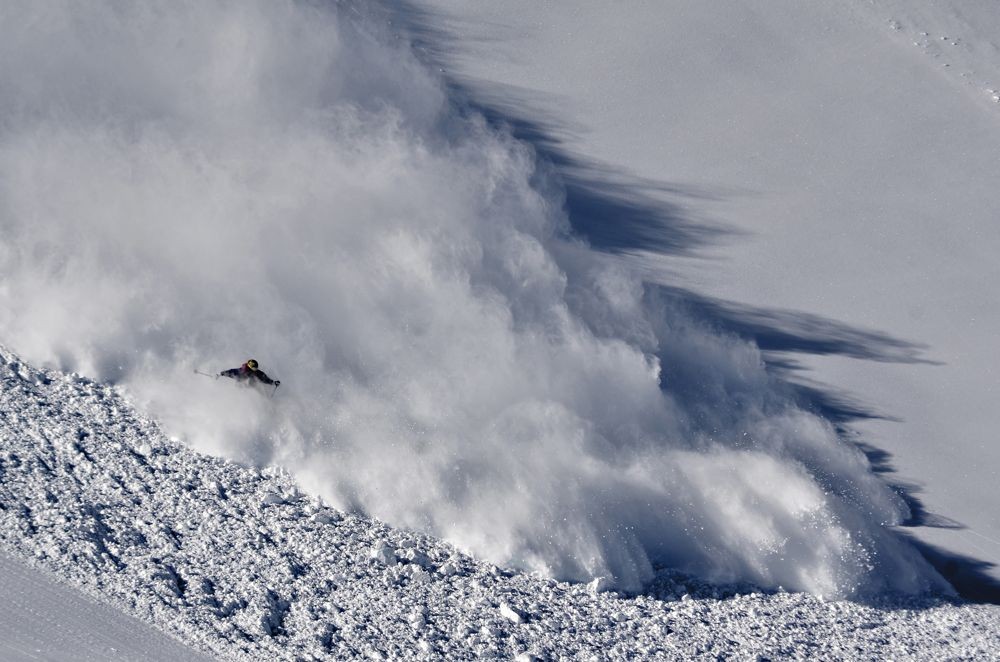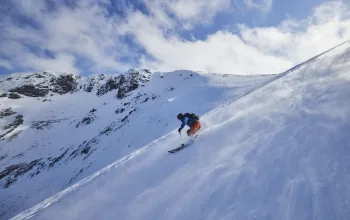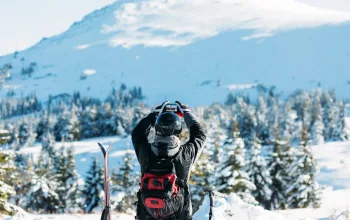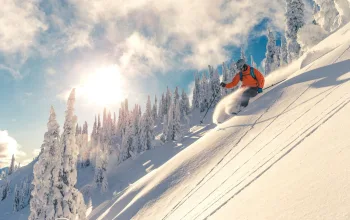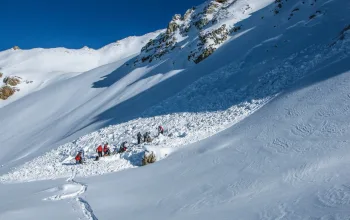How does an avalanche occur?
Slab Avalanches are responsible for 90% of backcountry fatalities, and are also the most common form in ski resorts. They occur when a more cohesive or harder layer of snow sets on top of a less cohesive or softer, weaker layer of snow. Sometimes the weak layer can barely support the layers above it and when additional weight like a skier or boarder is added to the upper layers, the weak layer collapses and the snowpack fractures triggering the slab avalanche.
I’m now genuinely amazed when I see fellow skiers heading off into un-pisted territory to ride all that lovely deep fresh snow. That has nothing to do with envying their powder skills, but everything to do with the fact that I now notice many of them do not carry even the most basic avalanche safety equipment.
It’s not only the gnarly heli-ski brigade who need to carry avalanche kit. Heavy snowfalls in our favourite resorts present just as much danger. Not only does a dump bring large quantities of loose, unpacked and unbonded snow, but it will also cover the surface – burying many of the warning signs that might otherwise reveal an unstable snowpack.
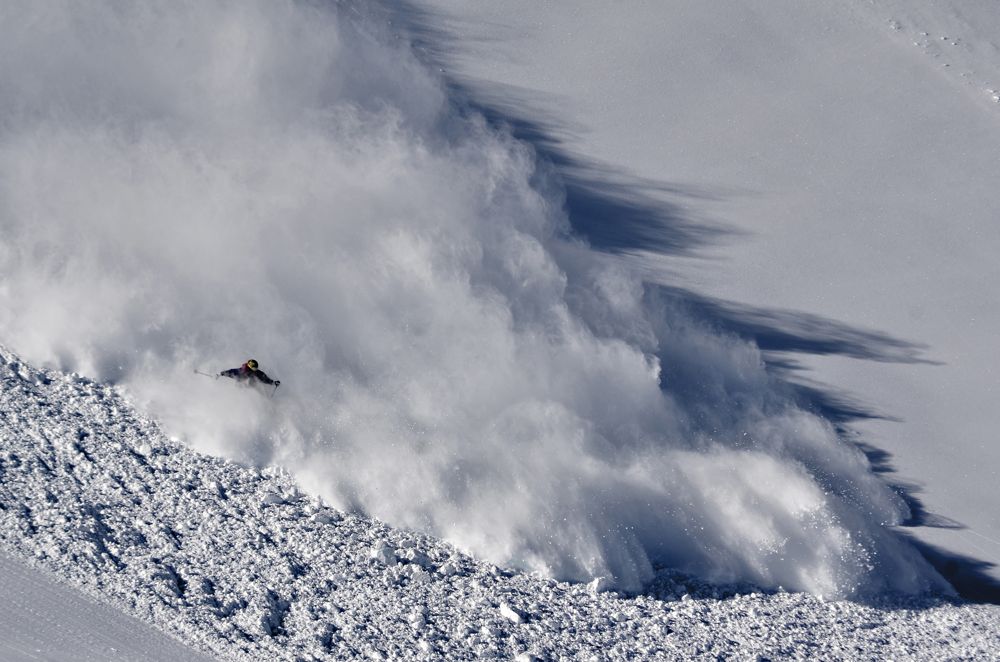
Most people die in what are called slab avalanches which may not travel far but contain large volumes of snow, overwhelming and trapping unsuspecting skiers and boarders underneath the surface.
No-one, least of all we at Snow, is suggesting that we shouldn’t go freeriding, but get clued up with some basic avalanche knowledge and precautions – and it could be your life that’s saved this winter.
The Snow and Alpine Awareness Camps (SAAC) were set up in 1998 and have grown from one avalanche camp to more than 25 across Austria, giving more than 15,000 skiers and boarders invaluable avalancheawareness training.
I joined a two-day basic avalanche-awareness course in mid-December in the resort of Hochfugen (famous for its freeriding terrain) in Austria’s Zillertal Valley. Amazingly, this ‘low-risk off-piste riding’ camp is completely free and includes free rental of avalanche safety equipment. All you are required to cover is your two-day lift pass which is at a reduced rate. Participants must also be over 14 and be able to ski to a reasonable level off-piste.
The course is run by highly qualified SAAC-appointed guides and blends theory and practical so the learning is informative, fun and freeriding is part of the course! Day one of the course is a three-hour classroom theoretical session which covers equipment, types of avalanches, weather, terrain, European Danger Scale and group dynamics. There are a lot of fascinating facts and figures to absorb, but I learnt a huge amount!
Day two is a full-day practical which puts much of the first day’s learning into practice and covers risk management, terrain check, danger check, how to behave off-piste, how to use emergency gear, what to do in case of an emergency and how to help someone who has been buried.
The day started at 9am with the class split into smaller groups, each with their own guide. We headed up above the tree line to the higher part of the resort, where there was some accessible off-piste within a relatively easy walk from the lift. The first thing the guide asked us to do was to look at the surrounding area and see if there were any signs of avalanche danger based on what we had learnt the previous day.
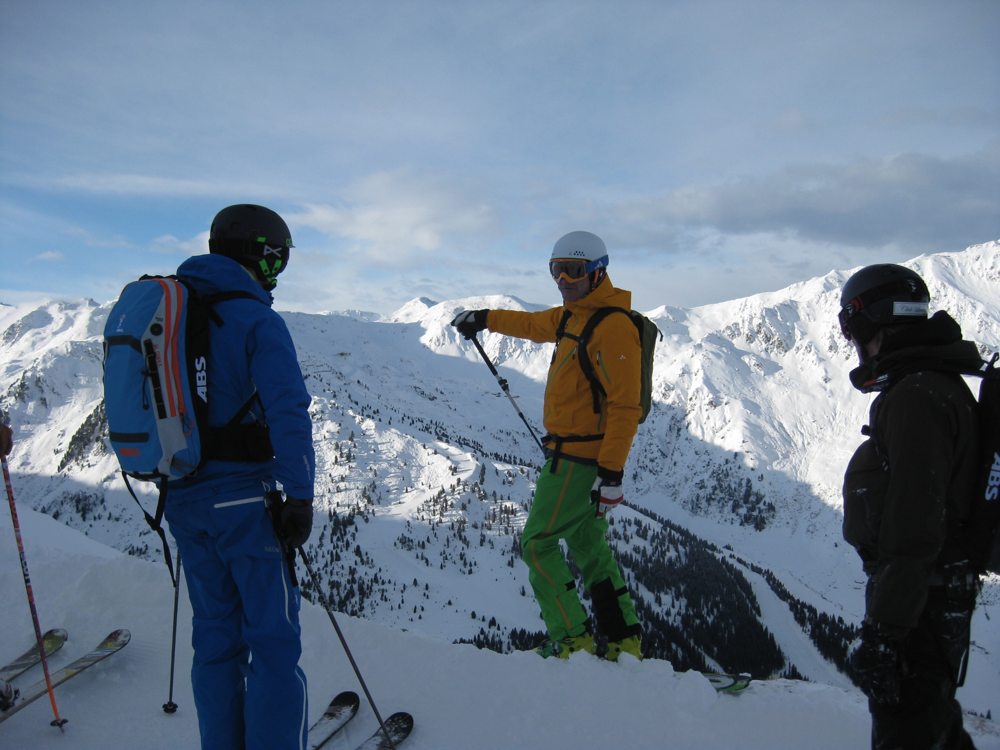
Learning about it in a classroom and trying to spot signs on the mountain were two very different things, but once the guide pointed out a few areas to focus on it became a bit clearer. Luckily the danger level was a 2 today (the maximum is 5) so it meant we could head off-piste! After a couple of descents we headed off to flatter, but deep terrain. Here we were going to learn how to use the avalanche equipment and the technique for searching for and rescuing a buried victim!
Armed with the kit, our group headed to an undisturbed area of waist-deep snow. We took turns in burying a transceiver with a shovel in a bag so the probes had something to find. Once buried the others would turn their Peeps to ‘search’ and begin to find where the buried transceiver and shovel was.
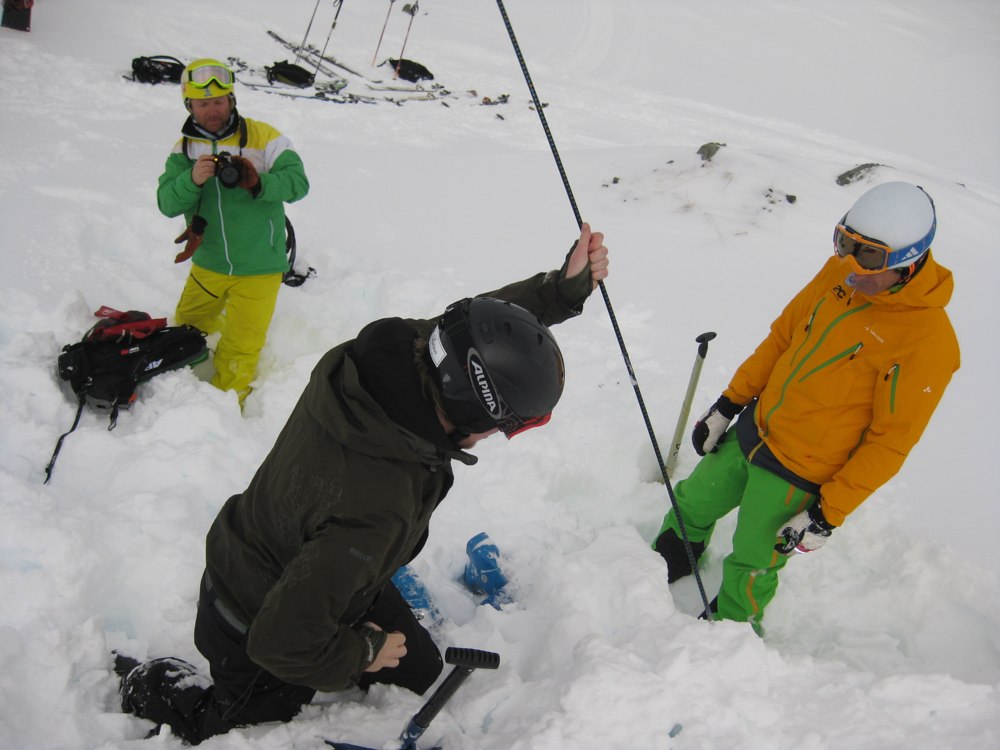
After a couple of goes we had the hang of it; and could find the backpack with speed. It’s brilliantly useful knowledge should you ever be unfortunate enough to have to find someone buried under the snow. After lunch we put in a couple of hours’ freeriding with the guide testing our ability to spot any danger signs.
It’s an enjoyable course and not in the least bit intimidating. It really makes you aware that going off-piste is dangerous if you fail to follow some simple rules or dismiss buying or renting the right equipment. Think about it: what are the chances of you being found in less than 18 minutes buried under two metres of snow in an area of 300 square metres with no transceiver!
What rules do I need to follow when going off-piste?
• Never go alone
• Always take safety equipment
• Make sure all members of your party are fit and able to ski the terrain you are heading for. Never ski above the level of the weakest member of your group.
• Make sure you are in the right emotional state – do not bow to peer pressure; if you are not comfortable with the terrain choice, don’t ski it.
• On terrain above 35% ski down individually, below 30% keep at least 30m distance apart – skiing too close to each other means extra weight-loading on the snow, which could trigger an avalanche.
• Never ski off-piste when the avalanche risk is 4 or 5
• Decide on a safe meeting point
• Make sure you note where the section of off-piste is located in the resort i.e. below lift x – this is important if you need to call for help.
• Keep your mobile turned on and plug in the avalanche emergency number.
What should I do if some of my group get caught under an avalanche?
• Call 112 (pin 112) for international, 140 Austria & 1414 Switzerland – this is the absolute first thing to do as you undoubtedly will need rescue help and services. It also means that if anything happens to you, they are on their way.
• Turn on the ‘search’ setting on all the groups’ transceiver. This should start to beep and give a distance and arrow to the nearest buried transceiver. When you get closer, hold the machine closer to the snow so you get an accurate distance and depth reading.
• Take out the probe and, working in a grid formation, push the probe into the snow until it hits something solid – this is likely to be the buried person.
• Mark the spot and dig away.
The SAAC basic avalanche-awareness courses are extremely popular (only 50 spaces per camp) so it is advisable to book your place as early as possible. Hochfugen is a great place to do this and it’s worth extending your stay after the course as the skiing here is superb. There are, however, lots of alternative locations and dates available.
For more information in English and registration links, go to www.saac.at/english


